All issues

Volume 60, Issue 3
Displaying 1-5 of 5 articles from this issue
- |<
- <
- 1
- >
- >|
Article
-
Iino YASUYO2011 Volume 60 Issue 3 Pages 99-107
Published: 2011
Released on J-STAGE: March 29, 2011
JOURNAL OPEN ACCESSNovel concentration treatment performance of radioactive iodine from radioactive waste is examined using the paper membrane, in which trimethylhydroxypropylammonium groups were homogeneously dispersed. The ion-exchange capacity of the paper membrane increased compared to that of normal anion exchange paper membrane by 30%. Ion transport across the paper membrane is evaluated with electroconductive membrane permeability derived from transmembrane potential and membrane conductance, and diffusional membrane permeability derived from transmembrane potential and ion flux in Na125I or NaCl single electrolyte concentration-cell system. In addition, the influence of glucose and urea, on the iodide ion across an anion exchange paper membrane were investigated in the Na125I concentration-cell system. The novel prepared paper membrane exhibits the high anion selective permeation through the paper membrane and indicates radioactive iodine permselectivity due to electrostatic effect.View full abstractDownload PDF (1255K)
Materials(Data)
-
Yuji KOKUBUN, Hiroki FUJITA, Masanao NAKANO, Shuichi SUMIYA2011 Volume 60 Issue 3 Pages 109-116
Published: 2011
Released on J-STAGE: March 29, 2011
JOURNAL OPEN ACCESSThe pretreatment procedure to measure the atom ratio of 129I/127I(10−8 — 10−7) and 129I concentration in the soil around the Tokai reprocessing plant by accelerator mass spectrometry (AMS) has been investigated and applied. The measured data by AMS method were compared with those by neutron activation analysis (NAA) method, and the relatively good agreement was confirmed. Also from the view of the relatively easy and quick pretreatment, AMS method is considered to be very efficient and practical for environmental radioactivity research especially for measurement of a large number of samples at the same time.View full abstractDownload PDF (1328K)
Serial Lectures
Fundamentals and Applications of Neutron Diffraction(Applications29)
-
Satoshi KOIZUMI, Daisuke YAMAGUCHI2011 Volume 60 Issue 3 Pages 117-130
Published: 2011
Released on J-STAGE: March 29, 2011
JOURNAL OPEN ACCESSUltra-small-angle neutron scattering (USANS), which is a scattering method observing in a q-region of q=10−3nm−1, was initiated by double crystal (Bonse-Hart) method. Recently, a focusing USANS method was developed by combining a pin-hole type spectrometer and focusing lenses. These two methods, which are complementary to each other, were employed to achieve wide q-observations on microbial cellulose, actin cytoskeleton, tire, and membrane-electrolyte assembly of fuel cell.View full abstractDownload PDF (2458K)
Fundamentals and Applications of Neutron Diffraction(Applications30)
-
Terutoshi SAKAKURA, Kiyoaki TANAKA, Yasuyuki TAKENAKA, Masashi WATANAB ...2011 Volume 60 Issue 3 Pages 131-149
Published: 2011
Released on J-STAGE: March 29, 2011
JOURNAL OPEN ACCESSThe crystal structure of the inorganic electride with various deoxidised states from 0 to around 50% was investigated with the synchrotron-X-ray and neutron diffraction methods. The electride was prepared by extracting two O atoms from the twelve cages in the unit cell of C12A7(12CaO·7Al2O3). Each O atom distributes randomly among cages distorting the cage, in which it exists and the ones in the neighborhood. The distortion caused by the O atom, which is O3 in the text, is so large that it breaks one of the Al-O bonds and forms Al-O3 bond producing a new AlO4 tetrahedron. O3 also causes the statistical distribution or splitting up to four ‘split-atoms’ of the other atoms around O3. On the other hand, since O3 locates at the general position close to the centre of the cage with point group symmetry bar 4, the site occupancy is only 2/(4×12).
Most of the split-atoms expected to exist were found on difference density maps in spite of the small site occupancies. Then, the distorted crystal structure corresponding to one of the four O3 atoms was reconstructed by selecting one of the split-atoms. The electrostatic potential around each split-atom was calculated to assess the selection. The distorted crystal structure of C12A7 determined is basically kept in the partially deoxidised electrides.
Although the distorted crystal structure was almost solved, no indication of free electrons in the cage urges us more accurate measurements with neutron and synchrotron-X-ray diffraction in a near future.View full abstractDownload PDF (3062K)
Fundamentals and Applications of Neutron Diffraction
-
Yukio MORII, Yasuhiko FUJII2011 Volume 60 Issue 3 Pages 151-161
Published: 2011
Released on J-STAGE: March 29, 2011
JOURNAL OPEN ACCESSDownload PDF (1513K)
- |<
- <
- 1
- >
- >|